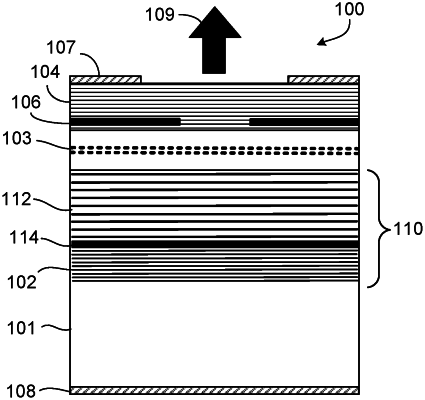| CPC H01S 5/18369 (2013.01) [H01S 5/18313 (2013.01); H01S 5/18377 (2013.01); H01S 2301/163 (2013.01)] | 19 Claims |

|
1. A narrow beam divergence semiconductor source operable to generate a beam having a substantially narrow beam divergence, an emission wavelength, and a substantially uniform beam intensity, the narrow beam divergence semiconductor source comprising:
an optical resonant cavity including a high reflection mirror having first and second sides, an extended length mirror having first and second sides, and an active region;
the high reflection mirror and the extended length mirror being disposed on distal sides of the active region such that the first side of the high reflection mirror is coupled to a first side of the active region and the first side of the extended length mirror is coupled to a second side of the active region opposing the first; and
a plurality of electrical contacts operable to direct electric current to the active region;
wherein the extended length mirror comprises a narrow bandwidth mirror and a high-reflectivity mirror and a hybrid DBR including a high-contrast region and a low-contrast region, wherein the high-contrast region includes a plurality of DBR pairs using materials with high refractive index difference, the DBR pairs being periodically disposed within the high-contrast region, and wherein the low-contrast region includes a plurality DBR pairs using materials with low-refractive index difference, the low-contrast pairs being periodically disposed within the low-contrast region.
|